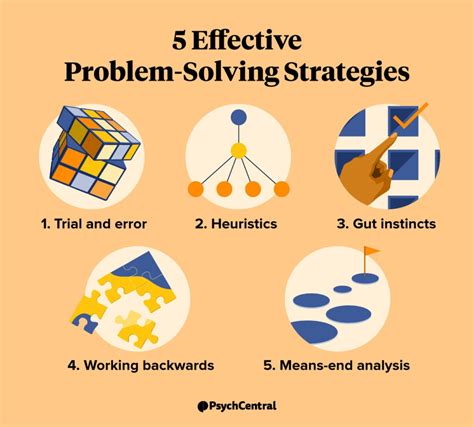Memory Error Solved: Expert Troubleshooting

Memory errors are a common issue that can plague even the most well-designed systems, causing frustration and downtime for users. These errors occur when a system runs out of memory or when there is a mismatch between the amount of memory available and the amount required by running applications. In this article, we will delve into the world of memory error troubleshooting, providing expert guidance on how to identify, diagnose, and solve memory-related issues. With a deep understanding of computer architecture and software interactions, we will explore the most effective strategies for mitigating memory errors and ensuring system stability.
Understanding Memory Errors

Memory errors can manifest in various forms, including out-of-memory errors, memory leaks, and segmentation faults. Out-of-memory errors occur when a system exhausts its available memory, causing applications to fail or become unresponsive. Memory leaks, on the other hand, happen when applications fail to release allocated memory, leading to a gradual decrease in available memory over time. Segmentation faults occur when a program attempts to access memory outside its designated boundaries, resulting in a crash or system freeze. To effectively troubleshoot memory errors, it is essential to understand the underlying causes and symptoms of these issues.
Common Causes of Memory Errors
Memory errors can be caused by a variety of factors, including inefficient programming practices, hardware limitations, and software conflicts. Inefficient programming practices, such as poor memory management or excessive memory allocation, can lead to memory leaks and out-of-memory errors. Hardware limitations, such as insufficient RAM or faulty memory modules, can also contribute to memory errors. Software conflicts, including incompatible applications or malfunctioning device drivers, can cause memory errors by interfering with normal system operation. By identifying the root cause of a memory error, troubleshooters can develop an effective plan to resolve the issue.
| Memory Error Type | Causes | Symptoms |
|---|---|---|
| Out-of-Memory Error | Inefficient programming, hardware limitations | Application crashes, system freezes |
| Memory Leak | Poor memory management, software conflicts | Gradual decrease in available memory, system slowdown |
| Segmentation Fault | Programming errors, hardware faults | Application crashes, system crashes |
![How To Fix Memory Management Windows 10 Error [100% Solved] How To Fix Memory Management Windows 10 Error [100% Solved]](https://blackatlantic.uga.edu/assets/img/how-to-fix-memory-management-windows-10-error-100-solved.jpeg)
Troubleshooting Memory Errors

Troubleshooting memory errors requires a systematic approach, involving system monitoring, memory analysis, and application debugging. System monitoring involves tracking system performance metrics, such as memory usage, CPU utilization, and disk activity, to identify patterns and anomalies. Memory analysis involves using specialized tools to examine memory allocation and deallocation patterns, identifying potential memory leaks and inefficient memory usage. Application debugging involves using debugging tools and techniques to identify and fix programming errors, such as null pointer dereferences or buffer overflows. By combining these approaches, troubleshooters can effectively diagnose and resolve memory errors.
Memory Error Prevention Strategies
To prevent memory errors, it is essential to adopt best practices in programming, regular system maintenance, and proactive monitoring. Best practices in programming involve using efficient memory management techniques, such as garbage collection and memory pooling, to minimize memory usage and prevent memory leaks. Regular system maintenance involves updating software and firmware, cleaning up temporary files and system logs, and performing disk defragmentation to ensure optimal system performance. Proactive monitoring involves using system monitoring tools and memory profilers to detect potential memory errors and address them before they become critical. By adopting these strategies, developers and system administrators can reduce the likelihood of memory errors and ensure system stability.
- Use efficient memory management techniques, such as garbage collection and memory pooling
- Regularly update software and firmware to ensure compatibility and security
- Perform regular system maintenance, including disk defragmentation and temporary file cleanup
- Use proactive monitoring tools to detect potential memory errors and address them before they become critical
What are the common symptoms of a memory leak?
+The common symptoms of a memory leak include a gradual decrease in available memory, system slowdown, and increased disk activity. As the memory leak progresses, the system may become unresponsive or crash, requiring a restart to recover.
How can I prevent memory errors in my applications?
+To prevent memory errors in your applications, use efficient memory management techniques, such as garbage collection and memory pooling. Regularly test and debug your code to identify and fix programming errors, and use proactive monitoring tools to detect potential memory errors before they become critical.
In conclusion, memory errors are a common issue that can be solved with expert troubleshooting and proactive prevention strategies. By understanding the causes and symptoms of memory errors, using specialized tools and techniques, and adopting best practices in programming and system maintenance, developers and system administrators can reduce the likelihood of memory errors and ensure system stability. With the right approach and knowledge, memory errors can be effectively diagnosed and resolved, minimizing downtime and ensuring optimal system performance.


